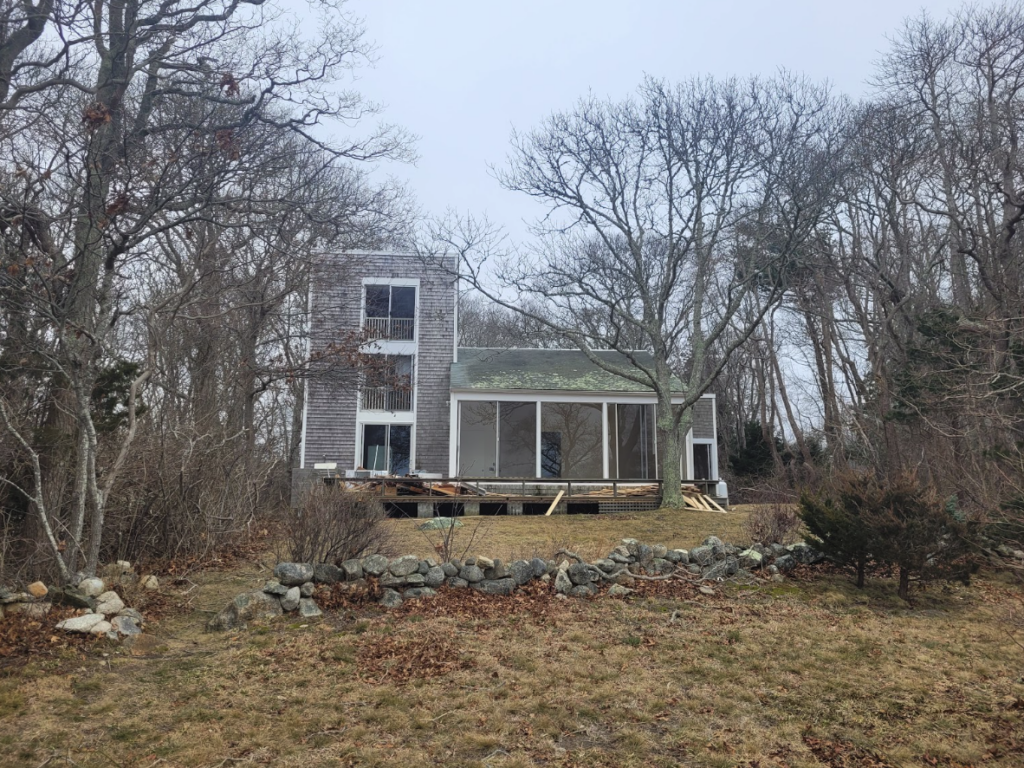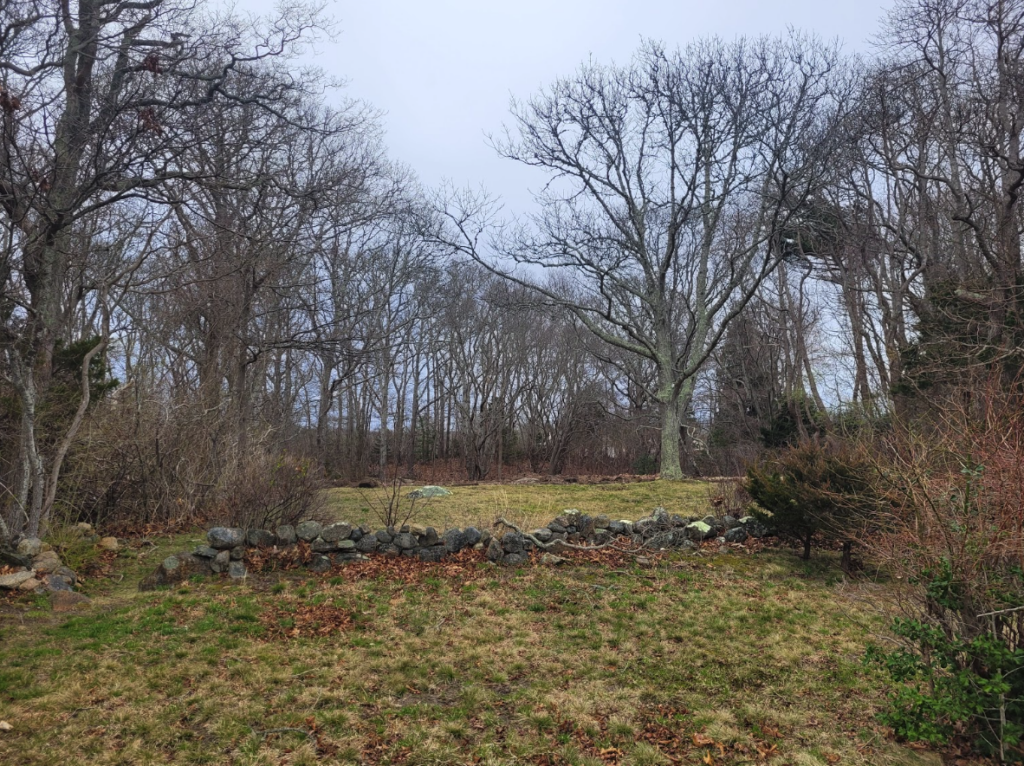PAST PROJECT:
Reunite the Land
Natural areas need to be reconnected to provide essential ecosystem services, like clean water, and to allow native species to move as climate changes.


Deconstruction of a property on James Pond, Martha’s Vineyard, to restore natural vegetation and resilience.
Our Partners:
Our Problem:
We need financially feasible and socially acceptable ways of “undeveloping” built properties in critical habitat connections.
Our Solution:
Remainder interests (“life estates”), are a relatively inexpensive way to acquire properties from willing sellers, which also allows elder sellers to afford to age in place. After their lives, if their properties are in a critical habitat linkage, their houses can be deconstructed, the land restored, and the habitat reconnected. Alternatively, if their properties are in climate-safe parts of towns, homes can be preserved for affordable housing. Village and Wilderness arranged to have a $1.5m restricted fund from The Nature Conservancy pass through the Martha’s Vineyard Community Foundation to subsidize the restoration and salvage of building materials for affordable housing. The pilot projects were undertaken by the Martha’s Vineyard Land Bank.
Read More:
At the community and landscape scale it can be quite apparent where residential and other development impedes the connection between critical habitats, or breaks up what otherwise would be large, intact conservation land that some species need. While often the natural habitat on these properties has been altered by building and landscaping, the good news is that most properties can be restored and the habitats reconnected. Remainder interests are a well-established means of buying future interests in a property – that is, obtaining ownership after the owners’ lives. They are relatively inexpensive for the buyer (in these cases, the Martha’s Vineyard Land Bank) because the owners retain the rights to live on or otherwise use the property for the rest of their lives. There are often tax and inheritance advantages for the sellers, too.
However, future interests in properties often fail to satisfy the sense of urgency that many conservation organizations feel as they see their landscape continue to decline, even if the remaining open lands are less important than reconnecting ecological viable expanses of land. Moreover, in over-developed communities there is often a shortage of affordable housing as well. The concept of removing a “perfectly good house” is inherently objectionable to some – even these houses often are, by definition, far from town or in climate-unsafe locations (e.g., near wetlands, flood zones and shorelines). Our answer to these problems was to recommend the remainder interest approach as a solution to the affordable housing problem as well. In this application, affordable housing organizations would purchase homes in walkable, climate-safe portions of existing villages. This allows elders to age in place (many were leaving to more affordable locations) and continue to engage in the communities they helped create. Moreover, we arranged to have salvageable materials from undevelopment sites benefit affordable home construction in less sensitive areas. Click here for the back story on how this all came about.

